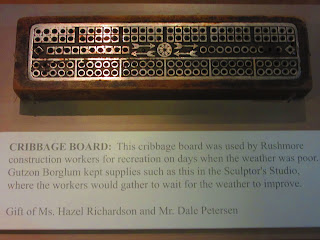We had originally planned to drive all the way to the Pacific Ocean, but decided to scrap that plan as it would have added more miles than we wanted and felt rushed. So, after Glacier we started to head east. After Montana we went back into Wyoming briefly and across South Dakota. Here's some of what we saw on that stretch.
This is Devil's Tower in northeastern Wyoming. It is a giant rock in the middle of nowhere basically that was formed by an igneous intrusion. That is, magma cooling and solidifying before it reaches the surface and then the surrounding area eroding away and you have what you see today. It's pretty big, you can see a speck of a person on the rocks at the bottom.
There are large caves in the Black Hills in western South Dakota. We visited two and both have interesting calcite formations. Jewel Cave is on top and that calcite looks kinda like brains. If it wasn't dirty it would be white and glisten like crystal. Wind Cave is the second picture and it has the greatest collection of boxwork in the world. It's still calcite but it forms (from erosion because it's harder than the limestone around it) in a thin box like pattern. Pictures in caves never come out great but the boxwork can be really creepy looking. It would be a good setting for a horror movie.
Wind Cave also has some nice hikes. Christiana did this one herself and is relaxing by a creek here.
Custer, South Dakota is one of the main tourist towns in the Black Hills because it's right in the middle of most of the attractions. Caves, parks, Mount Rushmore are all less than a half hour away. This also attracts some quirky museums as well like the National Museum of Woodcarving. It's really a showcase of the life's work of Harvey Niblack. He did thousands of elaborate animated wood carvings and even did some work for Disneyland. A lot them of are pretty strange scenes like an 1800's dentist office complete with movement to simulate ripping out a tooth.
Mount Rushmore is an interesting place to visit to learn about its creation, but it honestly doesn't look a ton different in person than in pictures. They were supposed to do more (like give Washington a full coat) but the creator died and then World War II happened so work stopped.
One cool story: workers had a baseball team in the South Dakota amateur league and there was a famous game where both pitchers had no hitters going into the 10th before Mount Rushmore had a walk and a triple to score the winning run. They guy who hit the triple is the only surviving driller who worked on Mount Rushmore and was there signing books when we visited.
The workers played cribbage in their downtime so we had to play a game their too. This was when we were waiting for the nightly lighting ceremony which is so patriotic it feels like American propaganda. That small bit of cynicism aside, it was a cool ceremony and they call down all active and former military at the end and have them give their names and branch which is nice.
Here's the Badlands. Nice to look at for a second driving through and then you move on. Also the ranger didn't want to give Christiana a junior ranger book so we didn't stay long. On to Minnesota!




















































